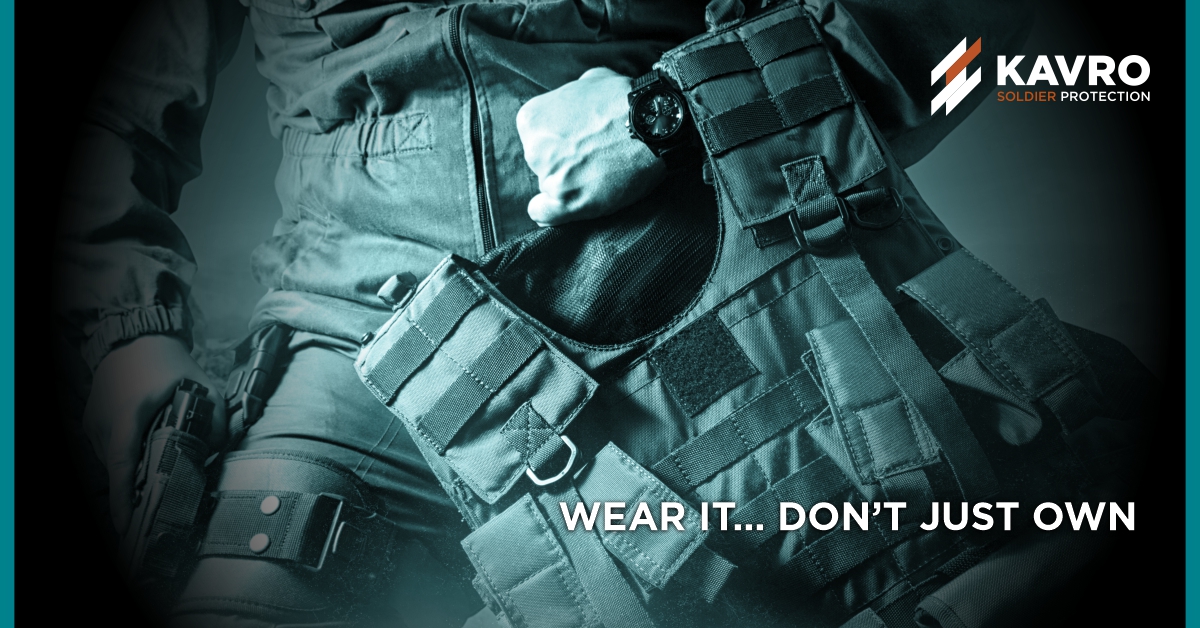There’s no room for guessing about the fact that ballistic body armour saves lives. The theatre of operations in Iraq, Afghanistan and Libya by coalition forces have been the proving grounds for body armour gear. There are numerous stories from across the world where the combatants owe their lives to the body armour they were wearing in the combat zone. It’s hard to believe that a soldier will sustain no mortal wounds after being shot on the torso from point-blank range with an AK-47.
Such true-life stories highlight how vital ballistic body armour gear has become in today’s asymmetric combat scenarios for soldiers and law enforcement personnel. However, various types of research and studies point otherwise towards the growing aversion to wearing ballistic body armour by soldiers and police officers. Despite knowing the advantages of wearing body armour, many soldiers and law enforcement personnel do not consider body armour to be as important as their standard-issue firearms when they suit up for duty.
Arid and dry climate of the region, which is largely desert, poses serious climatic challenges to the soldiers deployed on forwarding lines. Regular patrolling on foot or even when on mechanised platforms exposes them to harsh ultraviolet sun rays making them perspire profusely. As a result, the tight and heavy body armour gear becomes insurmountably unbearable for the soldiers. Which makes them doff their body armour and protective layer of clothing including headgear, exposing them to ever-sharp and on the sly enemy snipers for whom they come across as sitting ducks. Additional reasons for doffing being the misconception that if the enemy is not in the line of sight he isn’t present, which on the contrary is a misnomer.
A soldier going into combat already carries up to 50 pounds of gear and is further weighed down by body armour which typically weighs in excess of 25 pounds. Couple that with extreme heat conditions in Iraq and Afghanistan, and a soldier gets fatigued faster severely impacting his combat endurance. On the same lines, police officers wearing body armours for long periods complain about back pain and skin irritation due to sweat absorption by the body armour fabric. These limitations make protectors put aside their own safety by not wearing body armour to gain more manoeuvrability and endurance in combat scenarios.
To reinforce the clear life-saving advantages of ballistic body armour amongst soldiers and law enforcement personnel, it is important that concerns around weight, comfort and limited manoeuvrability are addressed with the latest technologies and innovations. With their 6th Generation ultra-lightweight armouring technology, MKU has not only pioneered in reducing the body armour weight by up to 40% as compared to standard body armour solutions. But have also ergonomically designed the body armour to address the various concerns around comfort, heat stress and manoeuvrability.
A soldier or police officer generally wear soft armour for protection from handgun and fragment projectiles. Whereas he inserts into his vest a hardened ballistic armour plate for rifle protection. Being bogged down by so much weight all day long, they start to face spine and back-related problems. The engineers at MKU have designed the body armour vests innovatively to provide proper weight distribution to the heavy armour inserts inside the armour vests and provide support to the spine during prolonged wearing.
Generally, in standard body armours, the fabric of the vest doesn’t help in sweat absorption. With constant sweating and no room for ventilation, there are chances for microbial growth that can lead to skin irritation and allergies. However, the fabric used by MKU in body armour solutions has a special mesh lining and reversible seams that facilitates ventilation and sweat absorption. Also, the fabric is designed with wicking characteristics to absorb and drain out the excess sweat. It is also a highly abrasion-resistant fabric, which doesn’t lead to rashes at abrasion-prone regions such as the inner sides of the shoulders and bottoms. Thus, eliminating any chances of skin problems for the wearer.
By making the body armour comfortable to wear with such advanced techniques, the protectors will no longer have to endure pain to cover the risk that might come their way in the line of duty. With such features in addition to increased protection, MKU has to lead the path in reassuring the protectors that body armour isn’t bulky and cumbersome anymore.


 LOGIN
LOGIN











